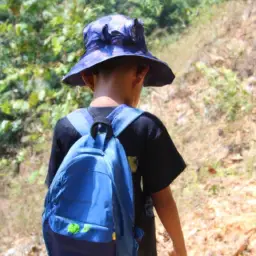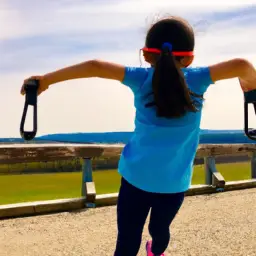Do you ever wonder why some teachers seem to have an unrelenting passion for their work, while others seem to be just going through the motions?
It’s not just about natural talent or experience – it’s also about grit.
Grit, defined as the combination of passion and perseverance towards long-term goals, has been shown to have a significant impact on teacher effectiveness and student outcomes.
When teachers possess grit, they are more likely to be engaged in their work, collaborate effectively with colleagues, and persist through challenges and setbacks.
This not only leads to a more positive teaching experience, but also improves student achievement.
By modeling grit, teachers can inspire students to develop their own perseverance and passion for learning.
In this article, we will explore the importance of grit in education, the impact of grit on teacher effectiveness, and strategies for cultivating grit in both teachers and students.
Key Takeaways
- Teachers with grit are more engaged and collaborative, modeling resilience and perseverance for their students.
- Students who exhibit grit tend to have better academic performance, motivation, and engagement, while fostering a growth mindset and perseverance culture.
- Grit building techniques, such as goal-setting, self-reflection, and deliberate practice, can help students develop resilience, determination, and passion.
- Professional development programs can provide training on effectively teaching grit and integrating it into instructional practices, while perseverance training can help teachers develop grit and manage stress.
Defining Grit and Its Importance in Education
You may have heard of grit before, but do you know what it really means? Contrary to popular belief, grit isn’t just about being persistent or resilient. It also involves having a passion for something and working towards your long-term goals despite setbacks and failures.
Defining grit may seem difficult due to some misconceptions, but it is an essential trait that can be developed and measured.
Grit is often compared to talent, with the belief that success is only possible if you’re born with a certain level of talent. However, this is a myth that needs to be debunked. While talent may give you a head start, it’s grit that helps you reach your full potential.
Grit is what sets apart successful individuals from those who give up at the first sign of difficulty. By developing grit, both teachers and students can overcome challenges and achieve their goals, leading to better outcomes in education.
The Impact of Grit on Teacher Effectiveness
Teachers who exhibit persistence and determination in their work are more likely to inspire their students towards achieving their goals. Teacher resilience is a key component of grit that can have a significant impact on student outcomes.
When teachers are able to bounce back from setbacks and continue to work towards their goals, they model this behavior for their students. This can create a culture of perseverance in the classroom, where students are encouraged to persist through challenges and setbacks.
Perseverance training can be a helpful tool for teachers who want to develop their grit. This type of training can help teachers learn how to overcome obstacles and stay focused on their goals.
It can also teach them how to manage stress and maintain a positive attitude, even in the face of adversity. By developing these skills, teachers can become more effective in their work and better equipped to help their students succeed.
The Relationship between Grit and Student Outcomes
When it comes to student outcomes, grit can have a significant impact in several areas.
Firstly, students who exhibit grit tend to have better academic performance, as they’re more likely to persevere through challenges and setbacks.
Additionally, students with high levels of grit tend to be more motivated and engaged in their learning, leading to greater success overall.
Finally, grit can positively influence attitudes toward learning, with students who exhibit grit being more willing to take on challenges and embrace learning opportunities.
Academic Performance
Academic performance is significantly influenced by a teacher’s level of grit. Here are four ways in which a teacher with grit can improve student outcomes:
-
They foster a growth mindset: Teachers with grit believe that intelligence and academic ability can be developed through hard work and perseverance. They encourage their students to adopt this same mindset, which can lead to improved academic performance.
-
They set high expectations: Gritty teachers have high expectations for their students and believe that they’re capable of achieving great things. This belief can inspire students to work harder and strive for excellence.
-
They provide consistent support: Gritty teachers are committed to their students’ success and provide consistent support throughout the learning process. This support can help students overcome obstacles and stay motivated to achieve their goals.
-
They model resilience: Gritty teachers model resilience by demonstrating perseverance in the face of challenges and setbacks. This can inspire students to develop their own resilience and work through difficult times in their academic journey.
By improving resilience and enhancing perseverance in their students, teachers with grit can have a significant impact on academic performance. They create a positive learning environment that fosters growth and inspires students to reach their full potential.
Motivation and Engagement
You can increase your motivation and engagement by finding personal connections to the material you’re learning. When you see how the subject matter relates to your everyday life, you’re more likely to become invested in the learning process. By seeking out these connections, you’re also empowering yourself as a student. You’re taking control of your own learning and finding ways to make it meaningful to you.
Another way to increase motivation and engagement is to adopt a growth mindset. This means that you approach challenges with a positive attitude and a belief that you can improve. When you make mistakes, you view them as opportunities for learning and growth rather than as failures.
This mindset helps you to persevere through difficult tasks and to see the value in putting in effort and hard work. By cultivating a growth mindset, you’re setting yourself up for success not only in the classroom, but in all areas of your life.
Attitudes Toward Learning
Having a positive attitude towards learning can greatly enhance your educational experience and personal growth. When you approach learning with a growth mindset, you believe that your abilities can be developed through dedication and hard work.
This attitude can help you persevere through challenges and setbacks, ultimately making you more resilient. Resilience is a crucial trait in achieving success, whether it be in education or any other aspect of life.
When you encounter obstacles, it’s important to have the determination to keep going and the belief that you can overcome them. Having a positive attitude towards learning and developing perseverance and resilience can not only improve your academic performance, but also your overall well-being and future success.
Strategies for Cultivating Grit in Teachers
Implementing strategies to foster grit in educators can ultimately enhance their effectiveness in the classroom and lead to improved student outcomes.
Collaboration opportunities and professional development programs can provide teachers with the tools and resources they need to cultivate resilience, perseverance, and self-efficacy. Through collaboration with peers, educators can share experiences and learn from each other’s successes and failures. This can create a sense of community and support that can help teachers overcome challenges and stay motivated in their roles.
Professional development programs can also provide teachers with training on how to effectively teach grit and how to integrate it into their instructional practices. This can include strategies for promoting a growth mindset, providing opportunities for student choice and autonomy, and creating a safe and supportive classroom environment.
By incorporating these strategies into their teaching, educators can help students develop the skills and attitudes they need to overcome obstacles and achieve their goals. Ultimately, fostering grit in teachers can have a positive impact on their own wellbeing and job satisfaction, as well as on the academic and personal success of their students.
The Role of Grit in Student Success
By fostering a growth mindset and promoting perseverance, students can develop the skills and attitudes necessary for long-term success. Grit building techniques, such as goal-setting, self-reflection, and deliberate practice, can help students cultivate resilience, determination, and passion towards their academic and personal goals. These techniques encourage students to push through challenges, learn from failures, and persist towards their desired outcomes.
Furthermore, grit measurement tools, such as the Grit Scale and the Grit and Resilience Assessment, can help educators identify students who may need additional support to develop their grit and work towards achieving their full potential.
Research has shown that students who possess high levels of grit are more likely to achieve academic success, have better mental health, and lead fulfilling lives. By helping students develop grit, teachers can equip them with the tools necessary to navigate the ups and downs of life, build meaningful relationships, and pursue their passions.
In essence, grit is not just a predictor of academic achievement, but also a key ingredient for leading a fulfilling life. As such, it’s crucial for educators to prioritize the cultivation of grit in their students and equip them with the skills and attitudes necessary for long-term success.
Frequently Asked Questions
How does grit compare to other important traits such as intelligence and motivation in determining student success?
When it comes to determining student success, intelligence and motivation are often considered the most important factors. However, grit also plays a significant role.
While intelligence can provide a foundation for learning, grit can help students persevere through challenges and setbacks. Similarly, while motivation can drive students to work hard, grit can help them stay focused and committed even when the going gets tough.
Ultimately, the combination of intelligence, motivation, and grit is what leads to academic achievement and overall success. So, when it comes to comparing intelligence vs. grit and grit vs. motivation, it’s important to recognize that all three are essential in promoting student success.
Are there any negative consequences of promoting grit in education, such as a focus on individualism and disregard for systemic factors?
When it comes to promoting grit in education, it’s important to consider the potential negative consequences.
One such consequence is the promotion of individualism over collectivism in education. By placing an emphasis on individual grit, it can create a culture where students are expected to pull themselves up by their bootstraps, rather than working together as a community to achieve success.
Additionally, focusing solely on grit can lead to a disregard for systemic factors that may impact student success, such as poverty, access to resources, and systemic biases.
It’s important to encourage grit and perseverance in students, but it shouldn’t come at the expense of promoting a collectivist mindset and recognizing the role of systemic factors in student outcomes.
How do cultural and socioeconomic factors affect the development of grit in students and teachers?
You may have noticed that students and teachers from different cultural and socioeconomic backgrounds tend to exhibit different levels of grit. This is because cultural influences and socioeconomic factors play a significant role in the development of grit.
For instance, students from collectivist cultures may prioritize group goals over individual achievement, while students from individualistic cultures may be more focused on personal success. Additionally, students from low-income households may have to deal with more stressors and fewer resources, which can impact their ability to persevere and develop grit.
As a teacher, it’s important to be mindful of these factors and work to create a supportive environment that empowers all students to develop their grit, regardless of their cultural or socioeconomic background.
Can grit be taught or is it a fixed trait that individuals are born with?
When it comes to grit, some people may believe that it’s a trait that individuals are born with, and therefore cannot be taught. However, research has shown that grit can indeed be taught through various methods.
These methods can include teaching individuals to set specific goals, providing them with regular feedback, and helping them to develop a growth mindset. Additionally, it’s important to note that teaching grit can have a positive impact on both students and teachers.
For example, teachers who possess high levels of grit are less likely to experience burnout, and students who are taught grit are more likely to persist through challenging tasks and achieve their goals. Overall, teaching grit can be an effective way to promote success and resilience, both in the classroom and beyond.
How can schools and education systems measure and assess the level of grit among students and teachers?
To measure the level of grit among students and teachers, there are various methods that schools and education systems can implement.
Measuring methods can range from self-report questionnaires to performance-based assessments. Self-report questionnaires allow individuals to reflect on their own level of grit, while performance-based assessments evaluate individuals’ ability to persevere through difficult tasks over an extended period of time.
Implementing strategies such as growth mindset interventions and goal-setting activities can also help to foster grit in individuals.
By regularly assessing and developing grit in both students and teachers, schools and education systems can create a culture of determination and resilience.
Conclusion
Congratulations, you’ve reached the end of the article! Hopefully, you’ve gained a better understanding of the impact of grit on teacher effectiveness and student outcomes.
Grit is not just about working hard; it’s about persevering through challenges and setbacks, and it plays a crucial role in achieving success in all areas of life.
As a teacher, cultivating grit in yourself can improve your effectiveness in the classroom, leading to better outcomes for your students. And by teaching your students to develop grit, you can help them become more resilient, persistent, and successful.
Remember, grit is not something that you’re born with – it can be cultivated and developed over time. So, keep pushing through those challenges, and encourage your students to do the same!









































































































